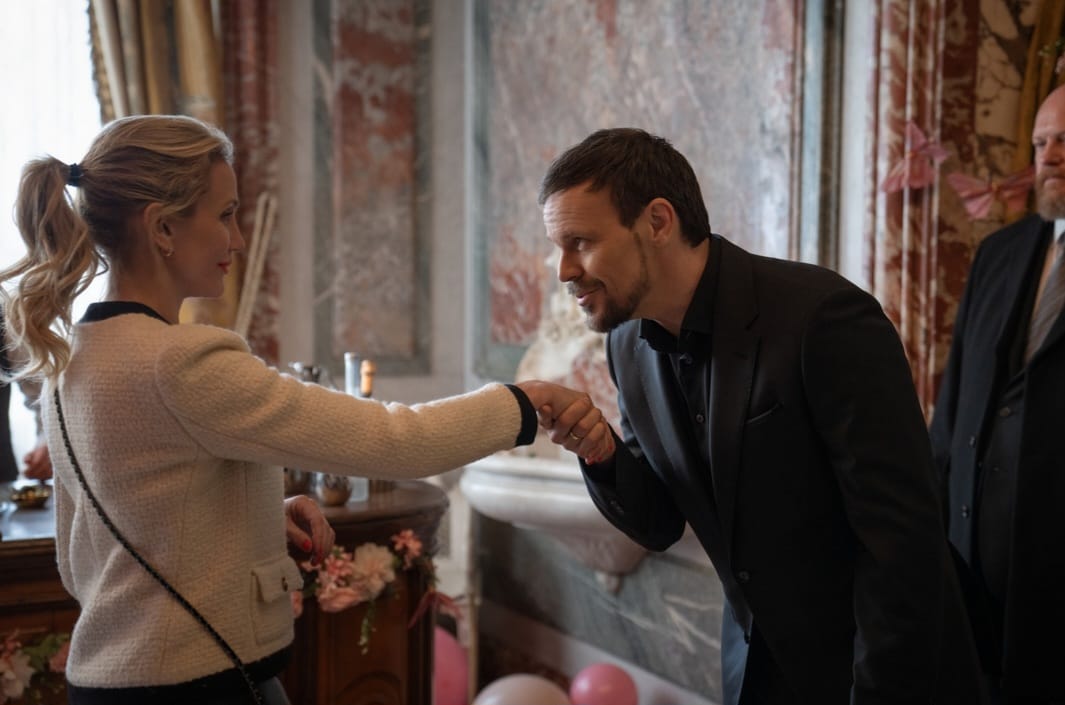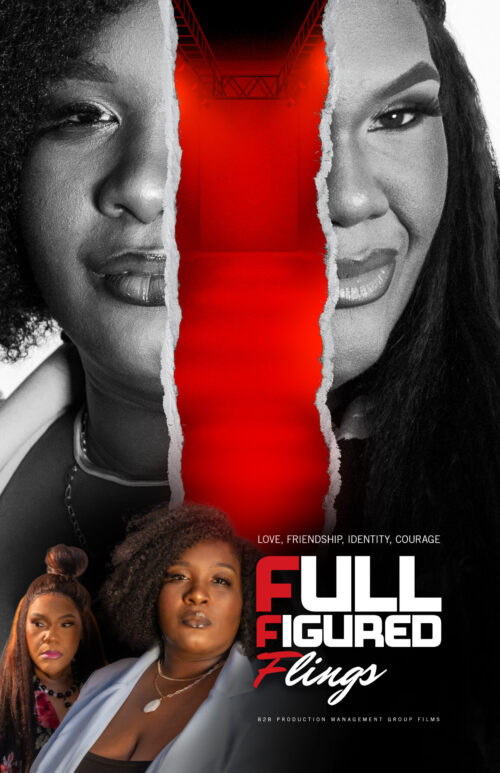We Speak Actors
Robert Besta appears opposite Cameron Diaz and Jamie Foxx in new Netflix film ‘Back In Action’

‘Back In Action’, dropping tomorrow on Netflix, is a fast-moving action comedy starring Cameron Diaz and Jamie Foxx as a middle-aged couple with children who are pulled back into being spies after their secret identities are exposed. Among the star-studded cast (the film also features Glenn Close and Andrew Scott), German actor Robert Besta plays an Eastern European oligarch who possesses some highly sensitive data that the couple want to get their hands on…
Robert, who was born in Poland and grew up in Germany, is an actor and musician known for the films ‘Treasure’, starring Lena Dunham and Stephen Fry; ‘And Tomorrow the Entire World’, directed by Julia von Heinz; and ‘Bonhoeffer: Pastor. Spy. Assassin’, directed by Todd Komarnicki.
Robert is also renowned for playing villains in the German TV shows ‘Die Fallers’ and ‘Tatort’, and he brings this skill for evil to his new Netflix role.
“I was happy to slip into the role of the dodgy businessman!” he said. He added that the Hollywood stars in the film were remarkably relaxed:
“It was an incredible and wonderful experience to be in front of the camera in such a big production. Working with Cameron and Jamie was super-relaxed and enjoyable.”
“Both greeted me warmly before the shoot and I chatted to Cameron about everything, so we had already got to know each other beforehand and were able to ease into the scenes. In addition, Jamie always kept everyone in a good mood between the takes and entertained everyone with little jokes and dance interludes!”

Robert speaks German, Polish, English and French and used all his languages in the film, with an Eastern European accent layered on top. Filming took place in London, UK and Atlanta, Georgia, and Robert did a lot of preparation for his role: “I prepared as I would for any other shoot: understanding the world in which the role is set, creating a role biography that I can connect with as much as possible, finding out what the goal of every scene is. It takes a lot of preparation to be able to let go of everything on set and be completely with your partner and in the moment.”
He said it was fascinating to see how everything in the film was planned down to the smallest detail, and yet the actors were still given the opportunity to improvise. He explained:
“For example, we invented a completely new scene on set with my film daughter, that wasn’t even in the script.”
“Seth, the director, instructed her to act out a scene with me: he called out lines, she acted them out and everyone was really enthusiastic about it.”
Robert’s acting career began in theatre – after studying at the Ernst Busch Academy of Dramatic Arts in Berlin, he became a regular actor at the Badisches Staatstheater in Karlsruhe. He said: “I didn’t know Karlsruhe until then and had no intention of staying – well, I still live there. In fact, it’s the longest time I’ve ever been in one place in my life.”
After appearing on the red carpet for the premiere of ‘Back In Action’, Robert’s year continues in a similarly high-octane vein, as he prepares to tour with his indie band MICOR as well as work on more exciting TV and film projects.
‘Back In Action’ premieres on Netflix on Friday 17 January.
Featured photo credit: Netflix/John Wilson
We Speak Actors
Full-Figured Flings Teaser Nears 14K Views – Director of Photography Offers Special Father’s Day Release

Back 2 the Basics Production Management Group is proud to announce the official teaser premiere for FFF: Full-Figured Flings, a bold and unapologetic new film celebrating full-figured women and challenging the norms of beauty in Hollywood. Clocking in at just 46 seconds, the teaser doesn’t waste a moment, delivering a powerful visual and emotional punch that sets the tone for a project rooted in body positivity, size inclusivity, and cultural truth.
Premiering ahead of the 20th anniversary of Phat Girlz (2006), FFF serves as both homage and evolution. The film expands the conversation around colorism, sizeism, and shapeism, spotlighting women who have often been cast aside, sidelined, or silenced.

“This teaser is more than a preview—it’s a declaration,” said Lillie Mae Jones, creator and producer. “FFF is our love letter to the women who’ve never been centered but have always been essential. We’re not just telling stories—we’re shifting the lens.”
FFF: Full-Figured Flings is currently in development as a non-union independent production, with plans to release in 2026. The film invites audiences and allies to follow, support, and amplify the message through community engagement, open casting calls, and creative collaborations—including the launch of a nationwide call for a “Big Girl Anthem” to serve as the film’s official theme song.


Accept the Challenge…
The buzz is building fast around the highly anticipated full-figured fashion experience FFF, and now there’s a challenge on the table that fans won’t want to miss.
After racking up 11,000 views in less than 10 days, the official teaser video for FFF on YouTube is quickly gaining momentum. And now, the film’s Director of Photography, Dominique Perry, has thrown down a bold offer:
“If we hit 20,000 views before Saturday, June 14th, I’ll drop an exclusive second teaser on Father’s Day.”
This is more than a film—it’s a movement. FFF is a high-fashion, high-impact visual celebration of full-figured women taking a stand for representation, inclusion, and power on and off the runway.
Here’s how you can help make it happen: Watch the teaser now on YouTube. Like, comment, and subscribe. Share it with your community and post why YOU stand in solidarity with full-figured women
Watch here for a taste of the boldness, beauty, and energy
-

 We Speak Soccer1 week ago
We Speak Soccer1 week agoNo Entry Allowed: How Austin Fortner Is Becoming a Standout Keeper with Confidence and Control
-

 We Speak Soccer4 days ago
We Speak Soccer4 days agoFrom Small Steps to Big Goals: How Alianna-Reyne Basa Became a Fearless Striker with a Champion’s Heart
-

 We Speak Soccer6 days ago
We Speak Soccer6 days agoBrylee Tagle: Crafting Excellence on the Soccer Field with Vision, Confidence, and a Passion for the Game
-

 We Speak Music6 days ago
We Speak Music6 days agoSinger/Songwriter Aro Rose To Release Highly Anticipated New Single “Live Without You” On June 29th, 2025

